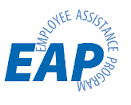NewDay Counseling
If you have a problem with alcohol or some other drug, call a NewDay counselor at 912.201.3605 * 401 Mall Blvd, Ste 101 D, Savannah, Ga * Free Phone Consultations
Alcohol and the Workplace

I won’t say which company it was, but when I was 18 years old I worked at a large car manufacturer. I worked on the assembly line at night. I was amazed at what I found. After my second month on the job, a guy I had talked to several times during breaks came up to my station and told me that if I wanted alcohol or drugs he’d get them for me. He told me that lots of the employees drank alcohol or did drugs on the job. He told me I could get a half pint and hide it in the push-up ceiling tiles in the bathroom.
One night I heard workers up the line laughing as a partially built car came down the line — when the car got to me I looked in the back and saw a guy passed out holding a bottle of liquor to his chest. I discovered soon enough that many employees were drinking or doing drugs on the job.
I’m sure the situation is different now, but not too long ago I saw a news expose of Ford workers caught smoking pot and drinking alcohol during their lunch breaks — it looked very familiar. Alcohol and the workplace is still a big concern. Years later after leaving the car company, I went to work in the addiction treatment field and read the statistics about alcohol and the workplace. I can easily believe even the worst statistics. Here is an excerpt from OPM.gov:
Alcohol is the single most used and abused drug in America. According to the National Institute on Alcohol Abuse and Alcoholism (NIAAA), nearly 14 million Americans (1 in every 13 adults) abuse alcohol or are alcoholics. Several million more adults engage in risky drinking patterns that could lead to alcohol problems. The costs to society in terms of lost productivity, health care costs, traffic accidents, and personal tragedies are staggering. Numerous studies and reports have been issued on the workplace costs of alcoholism and alcohol abuse, and they report costs that range from $33 billion to $68 billion per year. Alcohol is a major factor in injuries, both at home, at work, and on the road. Nearly half of all traffic fatalities involve alcohol. Please see the Appendix – The Disease of Alcoholism for a further discussion of alcoholism.
In the workplace, the costs of alcoholism and alcohol abuse manifest themselves in many different ways. Absenteeism is estimated to be 4 to 8 times greater among alcoholics and alcohol abusers. Other family members of alcoholics also have greater rates of absenteeism. Accidents and on-the-job injuries are far more prevalent among alcoholics and alcohol abusers.
Employee Assistance Programs have been adopted by smart companies for quite a while now. I strongly believe that EAP prevents wasted resources, and it helps to create a healthier workforce.
Recent Comments